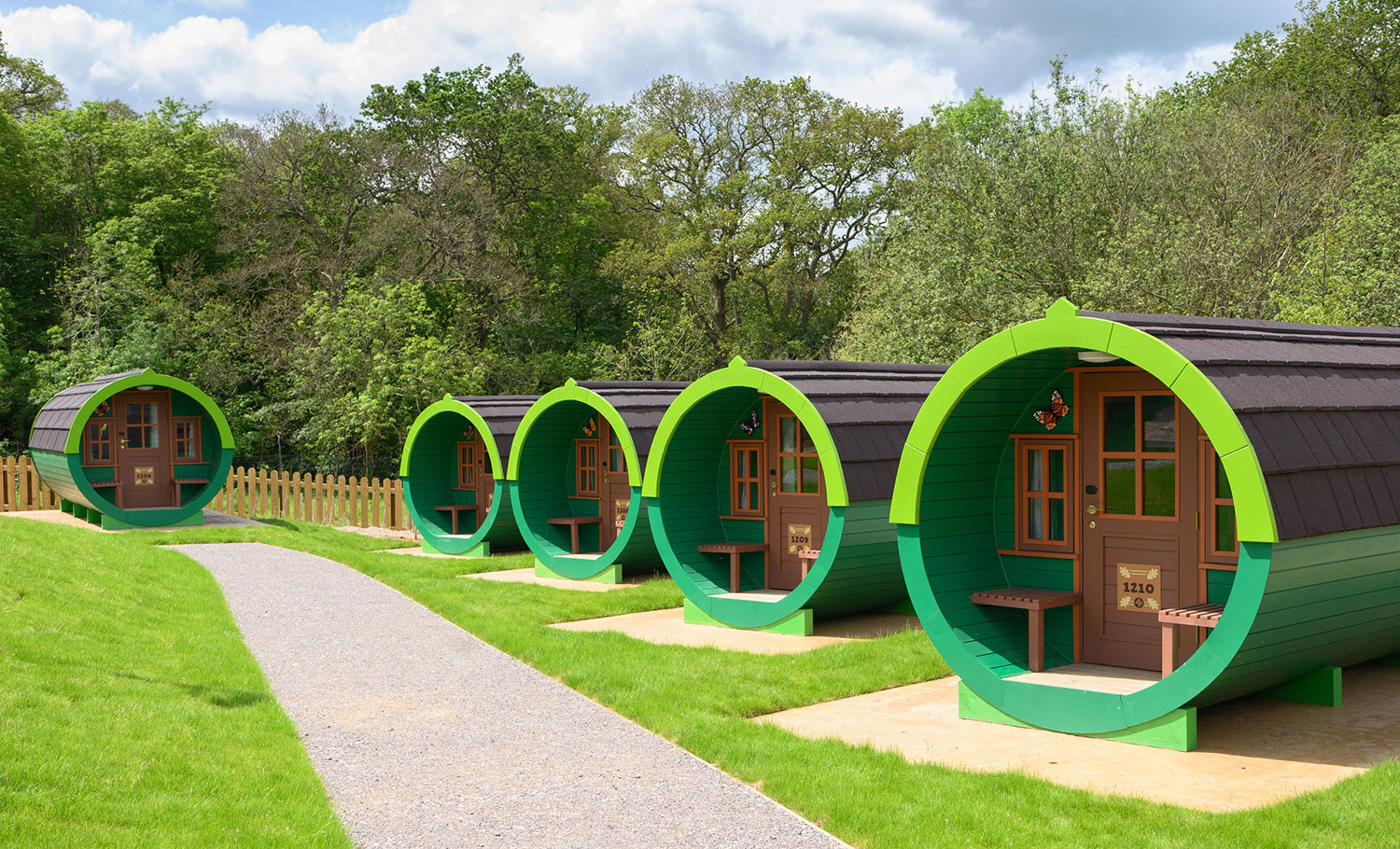They will achieve this by developing and implementing a robust carbon reduction plan, which includes the adoption low carbon technologies, a focus on energy efficiency and the purchasing of (verified carbon credits) to offset residual emissions.
Sustainability was central to the project, with a revised site-wide Travel Plan, improvements to parking and access, and a focus on reducing the energy consumption.
The Woodland Village offers guests a unique, nature-connected experience, featuring 130 lodges, 20 stylish camping barrels, an on-site restaurant & bar, and a family entertainment hub. The design fosters a close relationship with the natural surroundings, including play areas and a LEGO-themed nature trail.

Specific innovative products used throughout the build to achieve operational carbon neutrality are as follows:
- – LED lighting throughout external and internal throughout the hub and in the lodges and barrels further reducing the energy consumption of the village.
- – The Woodland Village is supplied with 100% renewable electricity.
- – Air Source heat pumps – in the lodges, taking heat from the outside air. This heats water for washing and showers.
- – The lodges’ air tightness target has been improved to reduce heating demand. The hub is heated and cooled via hybrid Variable Refrigerant Flow (VRF).
- – Electric utility vehicles – there are no vehicles allowed on the village except these. Used by the Resort to bring linens and luggage for guests to the lodges, they are plugged in and charge overnight for the next day’s use.
- – Solar Panels – we are installing solar car ports to generate more than the forecast annual electricity demand of the village. These 2,412 panels will result in a combined total of 1,206MW generation, which will dramatically reduce electricity consumption at the Resort. 99% of the energy will be used on site, serving the Woodland Village.
- – Water – we have installed low flush cisterns and low flow aerator faucets on taps to save water.
- – Biodiversity – we are building an insect hotel as well wild meadow planting to encourage natural biodiversity

At Merlin, we are committed to achieving carbon neutral across all global Merlin attractions by 2030, by prioritising energy efficiency and using renewable energy. We’re dedicated to forging a brighter future for generations to come. From guests to employees, contractors to suppliers, together, we can make a meaningful impact. Sustainability is at the forefront of our minds, and we’re working hard to ensure it’s prioritised with current and future projects, as can be seen by our work with the Carbon Trust on the review of our carbon reduction plans for the Woodland Village development.
At LEGOLAND Windsor Resort we are focusing on improving four key areas in the long-term: Energy, Waste, Water and Conservation. There are already some fantastic projects in place across the resort to support these priorities, including in the Woodland Village. LEGOLAND Windsor is zero waste to landfill.
As an integral part of Merlin’s sustainability strategy, the new Woodland Village embodies the company’s commitment to environmental stewardship and responsible business practices. The Woodland Village serves as a model for sustainable development within Merlin’s portfolio of attractions. Its design incorporates eco-friendly features such as energy-efficiency practices, and renewable energy sources. Showcasing innovative sustainable practices in action, the Woodland Village not only enhances the guest experience but also educates visitors about the importance of sustainability.
Partners
- The Carbon Trust
- Lichfields – Planning Consultants
- The Manser Practice – Architects
The Carbon Trust certificated the Woodland Village operationally carbon neutral credentials: https://www.legoland.co.uk/media/1awe2boj/merlin-updated-qes-organisational-neutrality-achievement-v6-docx.pdf
In 2019, Lichfields secured planning permission for the Resort’s Long Term Plan (which included the Woodland Village). They ensured that sustainability sat at the heart of the proposals, including working with other consultants to produce a Landscape and Ecological Management Plan and Site Travel Plan.
The scheme was designed by leading architectural firm The Manser Practice, with further adjustments prior to construction to maximise the inclusion of sustainable elements.



